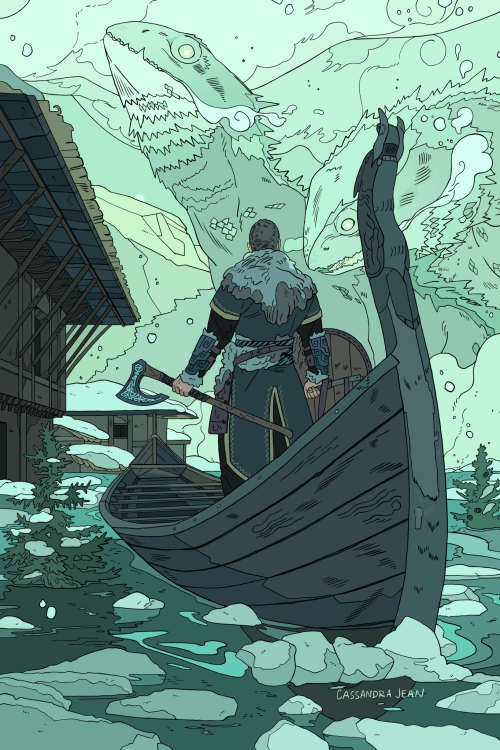Trans? Experienced Or Educated? Stuck In The USA?
Trans? Experienced or educated? Stuck in the USA?
First off, we're all rooting for you out here, muchacho.
Secondly, you can take a job abroad! And in nearly all cases you can apply to stay permanently after a few years ✨ Work visas typically allow a spouse, so 2 people can leave the USA per job. I should know, I work one of these jobs as a foreigner in Denmark and am accompanied by my American wife.
Below I've written a guide for applying in Europe, specifically, but be aware that it's not only the EU hiring Americans, most countries allow skilled/educated immigration.
Also, this is not just for trans people. Anyone who can be hired for a given job can follow the guide below.

Q&A -
Q: I don't sprechen Deutsch or anything though?
A: If you speak a given country's language that's a plus, but if not, don't worry! There are a lot of sites you can use to search for English-speaking jobs. One example is Englishjobs.com, which lists thousands of live, English-speaking jobs in mainland Europe. I would know, I found my current job on a similar site. For permanent settlement you in some cases need to have learned the language well (here that's available in Denmark, for example, after 5 years residency).
Q: Can I really bring my wife/husband?
A: In nearly all cases, yes. I'm in Denmark currently with my Californian wife. For the record I'm not trans, but a lot of my friends are (my background's in animation).
Q: Are they really hiring trans people?
A: Yes. And it's worth adding that DE&I (Diversity, Equity, and Inclusion) initiatives are still in full swing in many EU countries. As a result, your resume may have a particular appeal if you meet the following criteria:
Ethnic Minority: Companies are actively seeking diverse backgrounds to enhance representation.
Female: Many organisations prioritise gender diversity and aim to improve women's representation in the workforce.
LGBTQIA+: There is a growing recognition of the importance of sexual orientation and gender identity in hiring practices, with many employers implementing policies to support LGBTQIA+ employees.
Disabled: Organisations often have initiatives to promote the hiring of individuals with disabilities.
Neurodivergent: Increasing awareness of neurodivergent conditions leads to more companies welcoming neurodiverse talent. I have ADHD, for example, and my company is pushing hard for DE&I normalisation.
Q: Does it cost money to apply?
A: Usually the company you apply to will ask whether you have the right to work in the country and, if they really want you, will pay this application cost themselves. If you get the job offer and you need to then apply by yourself it costs, in most cases, $100 to $300. My application in Denmark cost $1,100, however. My wife could then apply for residency via that same application.
Q: Do I need an education in all cases?
A: Not necessarily. Varies by case. I have a degree, experience in my field, and software proficiencies that made my application stand out, but many jobs are skill or trade based.
Q: These jobs seem a little low paid for my field. Why is that?
A: Healthcare is covered, public transport is widespread, cities are walkable or cyclable, childcare is taken care of in a lot of places. You're paying less overall. Roughly 20% of the US GDP is from its batshit medical/insurance system, so you make about 10-20% more monthly in the US, give or take.
Q: If I lose my job, does my visa expire?
A: Yes, and your spouse's if you brought one. You can move jobs, so long as the salary still meets the minimum, but if there's downtime that means the visa lapses you gotta go.
Q: Does the job salary need to meet a minimum threshold for me to apply to live there?
A: Yes.
Germany: The minimum gross salary threshold for most skilled workers is around $60,000 per year. For occupations in high demand (e.g., engineers, doctors), the threshold is lower, at around $48,000 per year.
France: The minimum salary for a work visa in France typically aligns with the Smic (minimum wage), which is approximately $23,000 per year. However, for skilled positions, remuneration must usually be at least 1.5 times the Smic.
Netherlands: The minimum salary threshold for a highly skilled migrant is around $5,000 per month ($60,000 per year) for those over 30 years of age, and lower for younger applicants (around €4,000 per month).
Spain: The minimum salary threshold for work visas depends on the job but generally aligns with the national minimum wage, which is approximately $17,000 per year. However, skilled positions may require higher salaries.
Sweden: For skilled workers, the salary must be competitive and generally must meet the average salary level, which can be around SEK 26,400 per month (approximately $2,750).
Denmark: Unusually stringent laws make this 514,000dkk/$75,000 per year, or possibly less if your career is on the Positive List for Skilled Work or Higher Education. Worth mentioning that Denmark is perhaps the only EU country not seeing right wing populism in their political polls, largely due to their high bar for incoming migration.
Q: Do I need documentation?
A: Yes. Passport, certificates for education, marriage certificate if relevant. You'll also need to trade in your driver's license for a local one within a set period of time upon arrival.
Q: If I don't have a degree, skills, or experience, am I just fucked?
A: No, for example people with successful businesses can apply for entrepreneurial visas, and there are "working holiday" visas available (chiefly for people under 35) in Australia, Ireland, Singapore, New Zealand, Canada and South Korea, as these countries have an agreement with the USA (for now). Countries have a variety of ways in!
Q: What about muh rights?
A: You still gottem. Unless it's guns, and even then you can usually get a proper license in the countryside. Hate speech is not protected speech. Abortion is generally permitted within a term limit below fetal viability (e.g. 12 weeks in Germany and 12 weeks and 6 days in Italy, or 14 weeks in France and Spain). More privacy rights. More consumer protection.
Q: Is this an exhaustive list for ways a trans person can have asylum? Do I definitely need to travel far?
A: No! Read this helpful, recent guide, written in 2025: https://translash.org/articles/trans-relocation-guide-finding-trans-asylum-and-safe-havens/
---
If anyone in Europe or elsewhere wants to put their hand up and say, hey I'm in X city in Y country and I'll be here to talk to you when you move, reblog and say so! That's so important!
More Posts from Mincedmushrooms and Others

More brain dough content!
now: nuclear pasta!
I love the creativity of those silly scientists - Quantum foam [termed by John A. Wheeler some decades ago] was just the beginning! Now come all sorts of nuclear pasta - nuclear gnocchi, spaghetti, waffles, lasagna... etc... Who said physics is not [f/y]ummy? [funny and/or yummy]
If there's one thing that irks me about robotfuckers, it's that subset who are only interested in engaging with their hypothetical robot partners as though they were unusually textured humans. They're like "I'm mashing my face into my robot girlfriend's featureless thermoplastic crotch and getting high off the phthalate fumes", and like, if she's into that, more power to her, but this is a situation that may benefit from a more personalised approach, is what I mean to say.








The full Dragon series!! Each creature from a different biome… I had a lot of fun coming up with the different types of dragons and imagining what it would be like for these warriors to face each one. The fire dragon being particularly destructive. The night dragon near impossible to see coming in the dark. The ice dragons the size of mountains. The river dragon’s keen eyes. The sand dragon’s deadly poison. The mist dragons forcing the battle into the sky. The water dragon hiding in the deep. The garden dragon is chill though. Good lad.
Fire Dragon
Komodo
Mage / Staff
Night Dragon
Wolf
Samurai / Sword
Ice Dragon
Bearded
Viking / Axe
River Dragon
Crocodile
Thief / Dagger
Sand Dragon
Cobra
Archer / Bow
Mist Dragon
Eagle
Knight / Spear
Water Dragon
Eel
Sailor / Harpoon
Garden Dragon
Iguana
Healer / Potions
ttrpg where the amount of overkill damage your last pc took as they died is the starting xp you get with your next character. the best way to accelerate advancement is to get in way over your head and be torn to shreds
Sometimes the soul has a violent hunger for cute glass bottles. Even better if they have a wire attached stopper. They feed me even long after they are emptied

I think having worldbuilding as a hobby is both a wonderful delight and horrible curse. I have spent the past two days designing a metaphysical flow chart for alchemy that has maybe a 10% chance of coming up in any game ever, but it both ties into my hyperfixations and sets up the potential for a game around making a philosopher’s stone, and is therefore the best thing I have ever created.
what a good day to remember that butch lesbians (ESPECIALLY trans, poc, and/or fat butch lesbians) aren’t fucking predatory
Lee says:
Here’s a transitioning starter pack for all my trans folk out there!
Transfeminine resources:
Presentation:
Tucking
Chest area
Voice
Broad shoulders tips
Hair removal
Feminine walk
Curves
Waist training
Growing out your hair
Clothing
Makeup
Passing
Medical transitioning:
Not medically transitioning
Fertility
Puberty blockers
Estrogen & anti-androgens/testosterone blockers FAQ
The types of surgery available
Surgery: A guide for transfeminine people
Pumping (Silicone injections)
Facial Feminization Options
Breast Augmentation
Other:
Representation
Transfeminine period dysphoria
Yes, Transfeminine People Can Get Period Symptoms
Slipping into masculinity
Women’s restroom etiquette
Transfeminine people can breastfeed
Having sex or masturbating
Transmasculine resources:
Presentation:
Binding FAQ
Clothing
Facial hair
Masculine makeup
Getting short hair / Masculine long hair
If you can’t start T
Lowering your voice
Packing and standing to pee
Passing as male
Not shaving legs
Medical transitioning:
Not medically transitioning
Fertility
Puberty blockers
Testosterone FAQ
Top surgery
Facial masculinization surgery
Body masculinization surgery
Hysterectomy and oophorectomy
Bottom surgery (genital surgery)
Other:
Periods and related things
Help! I need to see a gyno
Pumping
Masturbation and sex
Using the men’s bathroom
Hudson’s FTM Guide
Height dysphoria
Hip dysphoria
More resources:
What gender am I? A brief intro to questioning
Trans 101 for trans people
What is the transgender umbrella?
How do I choose a name?
How do I come out at work/school or to family/friends?
Dysphoria info and tips page
Mental health coping page
Being trans in school
Non-binary resources
Resources to send allies/friends
A page to send to parents/guardians
Convincing someone to respect name/pronouns
Here is how to get hormones in the US
Here is how to get hormones in the UK
The NHS’s Guide For Young Trans People in England
Here’s a US resource with info on changing legally changing your name and gender marker
Here is a UK resource with info on changing legally changing your name and gender marker
What are the WPATH-SOC guidelines?
How to save money
How to buy a trans-related item online without parents knowing
I have to go swimming, what do I wear/do?
Trying to sleep when you have dysphoria
Airposts and traveling by plane
Gender neutral bathrooms
Getting insurance to cover your transition
Does transitioning help mental health?
Trans teen’s experiences with inpatient hospitalization
Trans identity isn’t a mental disorder
Vaping prevalence
Being religious and LGBT
Transgender Lives: Your Stories (to see trans adults)
Gender neutral pronouns in Spanish
Gender Variance Around the World Over Time
A map of gender-diverse cultures
American LGBT history by the National Parks Service
Crisis help: Suicide and crisis hotlines
Anyone can reblog, including allies!
An Introductory Timeline of Western Women's Fashion
I think a good place to start to get into dress history is general overview of the whole timeline. Understanding especially how the silhouettes change is really important ground knowledge to build the rest of the information on.
I'll start the timeline from Middle Ages and go till the first world war. I'll focus on upper class England/French sector, so keep in mind that before 17th century there were huge regional differences in fashion inside Europe and class differences too. There is a lot variance, changes and nuance inside any century and decade I'm about to discuss, but I'll try to keep this short and introductory and very simplified. I used a very scientific method of basically what makes most sense to me to divide the periods. I've made sketches what I would consider to be the basic silhouette of the period stripped mostly out of the detail and then I give couple of primary source examples.
12th century (Middle Ages)

Dress was simple one or more tunics over a chemise. They were overly long for upper classes, made out of straight lines. There were loose tunics often worn over another tunic, and tunics with laced bodice called biaut. In France bliaut sleeves often widened from the elbow, in England they often widened in frists.
13th century (Middle Ages)

Clothing was mostly very similar as in the previous century, though bliaut was mostly gone and new popular style was a loose sleeves surcoat.
14th century (Middle Ages)

Tailoring basically revolutionized clothing production, since clothes weren't made out of rectangles anymore and could be better made to fit form. Also functional buttons and lacing was popularized resulting in very fitted styles. The underlayer tunic, kirtle, became a fitted supporting layer.
15th century (Middle Ages)

Improvements in weaving technology and trade and growing prosperity in Europe showed in clothing as excess of fabric and variety of trends. Houppelande, a loose A-lined overdress lined with fur and fastened with a wide belt under breasts, became a very popular clothing item, and in later decades developed into the iconic Burgundian dress (the red dress). Fitted overdress continued to be popular alongside the warmer houppelandes.
1500s-1550s (Tudor period)

In the renaissance era clothing became increasingly structured and elaborate. The bodice was heavily boned and the skirt was also structured.
1560s-1610s (Elizabethan Era)

Both structuring and elaborate decoration reach it's peak during Queen Elizabeth's reign. She became the defining fashion icon of the late renaissance.
1620s-1670s (Baroque)

In baroque era the bodice was still heavily structured, but more curved than the conical Elizabethan bodice. Otherwise though structuring was replaces with dramatic excess of fabric.
1680s-1710s (Baroque)

In the late 17th century there was a huge shift in the clothing industry as mantua, a loose open robe inspired by Japanese kimono, came to dominate fashion. Rigid bodice was replaces by structured under layer, stays. Stays brought back the conical silhouette of Elizabethan era.
1720s-1780s (Rococo)

Mantua developed into the iconic Rococo dress in France, robe à la francaise (first example picture), and in England robe à la anglaise with closed bodice. Rococo fashion was characterized by the wide silhouette of the skirt.

Since Tumblr won't accept more than 10 pictures per a post I'll have to continue in a reblog. So to be continued!


you can only reblog this today
-
 dragon03138 reblogged this · 3 weeks ago
dragon03138 reblogged this · 3 weeks ago -
 elecktrum reblogged this · 3 weeks ago
elecktrum reblogged this · 3 weeks ago -
 vanilla-phantomhive reblogged this · 1 month ago
vanilla-phantomhive reblogged this · 1 month ago -
 vanilla-phantomhive liked this · 1 month ago
vanilla-phantomhive liked this · 1 month ago -
 boyfriendsmalec liked this · 1 month ago
boyfriendsmalec liked this · 1 month ago -
 fukurouonthesea reblogged this · 1 month ago
fukurouonthesea reblogged this · 1 month ago -
 fukurouonthesea liked this · 1 month ago
fukurouonthesea liked this · 1 month ago -
 sapphiccitrine liked this · 1 month ago
sapphiccitrine liked this · 1 month ago -
 afemininebirb reblogged this · 1 month ago
afemininebirb reblogged this · 1 month ago -
 afemininebirb liked this · 1 month ago
afemininebirb liked this · 1 month ago -
 savvy-seeker liked this · 1 month ago
savvy-seeker liked this · 1 month ago -
 mellowpavogames liked this · 1 month ago
mellowpavogames liked this · 1 month ago -
 of-arrows-and-wanderlust liked this · 1 month ago
of-arrows-and-wanderlust liked this · 1 month ago -
 nickelanddamned reblogged this · 1 month ago
nickelanddamned reblogged this · 1 month ago -
 nickelanddamned liked this · 1 month ago
nickelanddamned liked this · 1 month ago -
 knox6277 liked this · 1 month ago
knox6277 liked this · 1 month ago -
 glittery-epidermis reblogged this · 1 month ago
glittery-epidermis reblogged this · 1 month ago -
 radical-zelenka liked this · 1 month ago
radical-zelenka liked this · 1 month ago -
 accountmadejusttotellsomeonetoge liked this · 1 month ago
accountmadejusttotellsomeonetoge liked this · 1 month ago -
 lifebloodblue reblogged this · 1 month ago
lifebloodblue reblogged this · 1 month ago -
 android-and-ale reblogged this · 1 month ago
android-and-ale reblogged this · 1 month ago -
 greymantleish liked this · 1 month ago
greymantleish liked this · 1 month ago -
 eternalballofsuffering liked this · 1 month ago
eternalballofsuffering liked this · 1 month ago -
 pinnedmorpho liked this · 1 month ago
pinnedmorpho liked this · 1 month ago -
 disastrousoilthing liked this · 1 month ago
disastrousoilthing liked this · 1 month ago -
 thought-u-said-dragon-queen reblogged this · 1 month ago
thought-u-said-dragon-queen reblogged this · 1 month ago -
 thought-u-said-dragon-queen reblogged this · 1 month ago
thought-u-said-dragon-queen reblogged this · 1 month ago -
 thought-u-said-dragon-queen liked this · 1 month ago
thought-u-said-dragon-queen liked this · 1 month ago -
 ilikeplantz02 liked this · 1 month ago
ilikeplantz02 liked this · 1 month ago -
 mildly-offensive-so-sensitive liked this · 1 month ago
mildly-offensive-so-sensitive liked this · 1 month ago -
 thatfruitymonster liked this · 1 month ago
thatfruitymonster liked this · 1 month ago -
 imextremelynice liked this · 1 month ago
imextremelynice liked this · 1 month ago -
 android-and-ale liked this · 1 month ago
android-and-ale liked this · 1 month ago -
 curlsabroad reblogged this · 1 month ago
curlsabroad reblogged this · 1 month ago -
 guardian-of-fandoms liked this · 1 month ago
guardian-of-fandoms liked this · 1 month ago -
 dsjinspring reblogged this · 1 month ago
dsjinspring reblogged this · 1 month ago -
 dsjinspring reblogged this · 1 month ago
dsjinspring reblogged this · 1 month ago -
 dsjinspring liked this · 1 month ago
dsjinspring liked this · 1 month ago -
 ninefoldrin reblogged this · 1 month ago
ninefoldrin reblogged this · 1 month ago -
 curlsabroad liked this · 1 month ago
curlsabroad liked this · 1 month ago -
 curlsabroad reblogged this · 1 month ago
curlsabroad reblogged this · 1 month ago -
 ninefoldrin liked this · 1 month ago
ninefoldrin liked this · 1 month ago -
 rotund-spheal reblogged this · 1 month ago
rotund-spheal reblogged this · 1 month ago -
 rotund-spheal liked this · 1 month ago
rotund-spheal liked this · 1 month ago -
 ionlypostmymeemocs liked this · 1 month ago
ionlypostmymeemocs liked this · 1 month ago -
 abluegemfragment liked this · 1 month ago
abluegemfragment liked this · 1 month ago -
 schrodingers-redfish liked this · 1 month ago
schrodingers-redfish liked this · 1 month ago -
 glovefae liked this · 1 month ago
glovefae liked this · 1 month ago -
 pisspope liked this · 1 month ago
pisspope liked this · 1 month ago

???/adult/She/theyHello, I am here to lurk and be really gay. I have passions for sewing, baking, and TTRPGS
56 posts